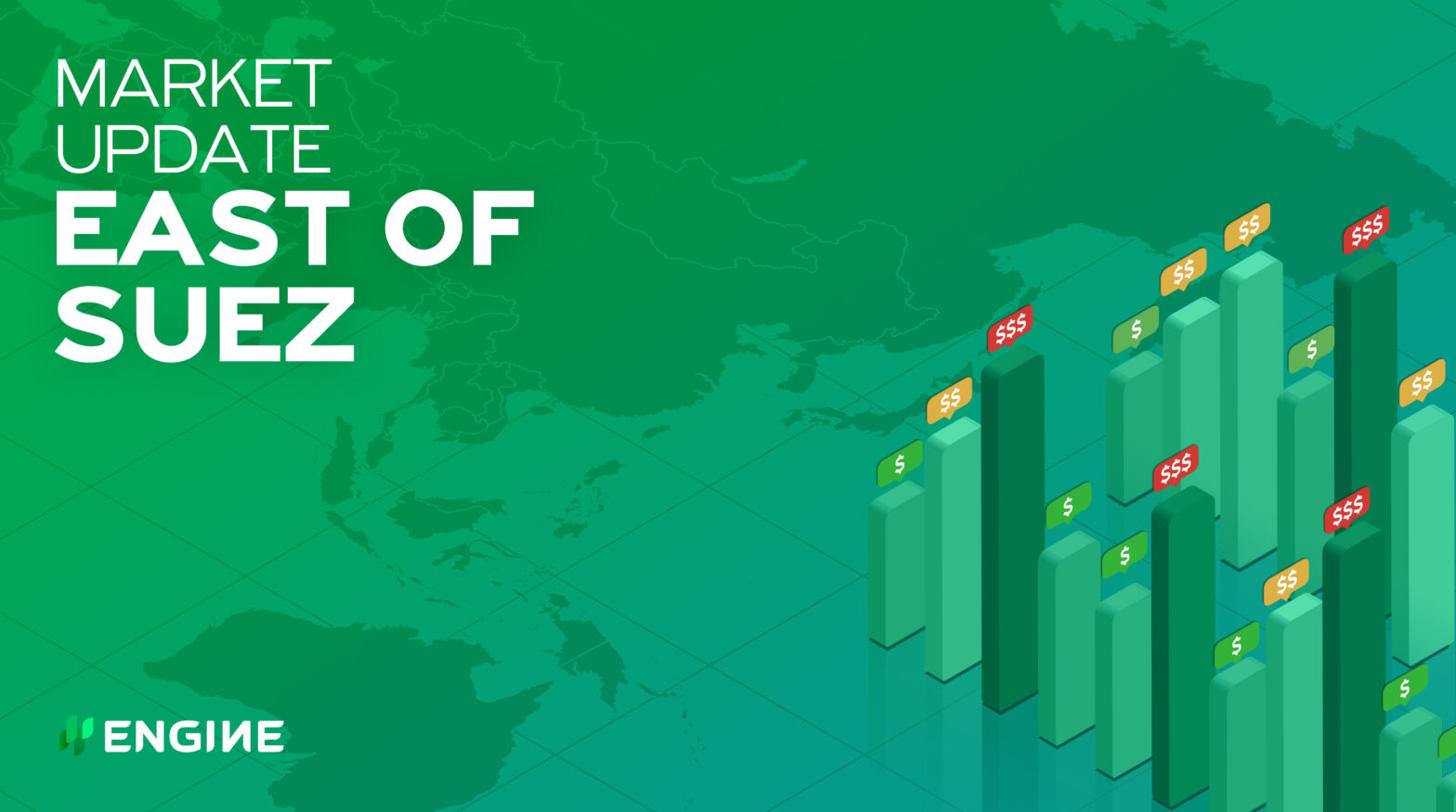Bunker prices have risen for another day, touching multi-month highs as Brent has surpassed $79/bbl for the first time in three years.
Changes on the day to 18.30 SGT (10.30 GMT) today:
- VLSFO prices up in Zhoushan ($8/mt), Singapore ($5/mt), and steady in Fujairah
- LSMGO prices up in Singapore ($16/mt), Fujairah ($12/mt) and Zhoushan ($5/mt)
- HSFO380 prices up in Fujairah ($18/mt), Zhoushan ($17/mt), and Singapore ($8/mt)
HSFO380 prices have seen great gains in Zhoushan and Fujairah since Friday, while Singapore’s price has resisted more of Brent’s upward pressure and gained by less. Singapore continues to have among the longest lead time for the high sulphur fuel grade, at eight days.
Fujairah’s LSMGO price has risen just above the $700/mt, keeping Zhoushan and Singapore at discounts of $40-50/mt.
Fuel availability is tight for prompt supply in Fujairah, but lead times have come down since last week. Low sulphur fuel grades require up to five days in advance in the UAE bunkering hub, compared to seven days for HSFO380.
Brent
Front-month ICE Brent has jumped $1.80/bbl higher on the day since Friday, to $79.22/bbl at 18.30 SGT (10.30 GMT) today.
Brent has been rallying for five straight days amid supply concerns. Persistently shut in offshore crude production in the Gulf of Mexico, and an inability of some OPEC+ members to pump enough oil to fill their production quotas.
US crude inventories have slumped to their lowest point since October 2018, which was also the last time Brent made it above the $79/bbl mark. The majority of US offshore crude production was shut in when suppliers braced for the impact of Hurricane Ida a month ago, and some platforms incurred long-term damage. Crude inventory draws have accelerated as a result.
Some OPEC+ members have been unable to raise output in line with the group’s policy of easing output cuts by 400,000 b/d in each month between August and December this year. A lack of investment and maintenance issues have led Nigeria and Angola to fall 276,000 b/d short of their combined 2.83 million b/d production quota so far this year, according to Reuters.
Tightening natural gas supplies and surging prices could prompt more power plants than usual to switch to cheaper fuel oil and gasoil, especially as the colder winter months approach in the northern hemisphere. Oil prices will be under sustained pressure, according to OANDA analyst Jeffrey Halley.
“Brent crude will have resistance at USD 79.50, the intra-day high, followed by USD 80.00 a barrel. It should then move quickly to USD 82.00, and a rally to the [2018] highs around USD 87.00 a barrel in the days ahead is not inconceivable,” he says.
